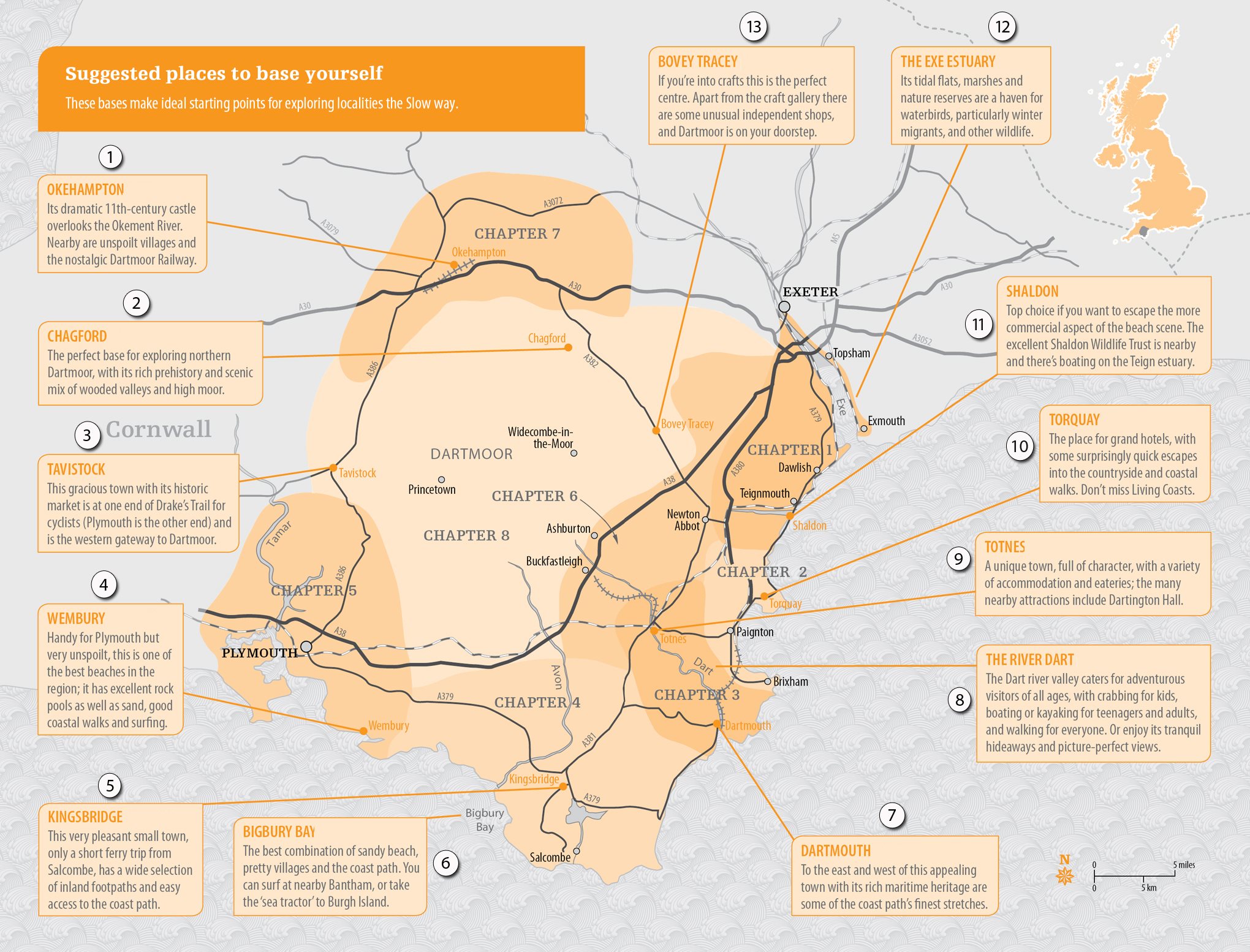
Click on the links below for highlights |
AUTHOR
Hilary Bradts career as an occupational therapist ended when potential employers noticed that the time taken off for travel exceeded the periods of employment. With her then-husband George she self-published the first Bradt guide in 1974 during an extended journey through Latin America. Since then she has seen Bradt Travel Guides grow to be an internationally recognised and award-winning publisher. In 2008 she was awarded an MBE and in 2009 received the Lifetime Achievement Award from the British Guild of Travel Writers. Now semi-retired she writes regularly for the national press and travel magazines and currently has a monthly travel slot on BBC Radio Devon. She lives in Seaton, East Devon ( www.hilarybradt.com ).
www.hilarybradt.com ).
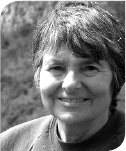
CO-AUTHOR
Janice Booths working life has included professional stage management, archaeology, selling haberdashery in Harrods, compiling puzzle magazines and travelling widely. She initiated and co-wrote the Bradt guide to Rwanda, has edited 25 or so Bradt guides to various far-flung places, and helps to judge Bradts annual travel-writing competition. She moved to Devon in 2001 with happy memories of childhood holidays, having tasted her first clotted cream here aged eight and ridden on Burgh Islands sea tractor aged ten, and lives within sight and sound of the sea.
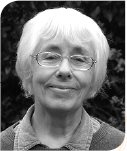
Authors note
The two authors researched this book both together and apart, so the I could be either Janice or Hilary. Just so you know
AUTHORS STORY
Hilary Bradt
I bought my little house in Devon in 2005, but it was a while before I could tear myself away from my roots in Buckinghamshire. Now I wonder why on earth it took me so long. Its always fascinating to look back at the process of getting to know a new place; Ive done it often enough. It begins with your immediate neighbourhood then gradually radiates out, like ripples, as locals tell you about, or show you, their favourite places. Devon has been different. Because the predecessor of this book, Slow Devon and Exmoor, was researched within a year of moving here, the process has been more like one of those speeded-up nature films where the greening of my knowledge has quickly spread from one point to cover the whole landscape. Its a process that never ends, nor does the excitement at finding something new ever diminish. I remember the sheer elation when we discovered Kenn and walked on a spring day down its main street past the thatched cottages and library in a phone box, marvelling that no-one seemed to know about such an enchanting village. Conversely, our pleasure at experiencing the paddle-steamer on the River Dart a well-known tourist attraction was just as fresh and untarnished by expectation.
I feel so lucky to live here, and to have such a good reason to keep exploring.
First edition published April 2014
Bradt Travel Guides Ltd
IDC House, The Vale, Chalfont St Peter, Bucks SL9 9RZ, England
www.bradtguides.com
Print edition published in the USA by The Globe Pequot Press Inc,
PO Box 480, Guilford, Connecticut 06437-0480
Text copyright 2014 Hilary Bradt
Maps copyright 2014 Bradt Travel Guides Ltd
Photographs copyright 2014 Individual photographers ()
Series Editor: Tim Locke
Project Managers: Maisie Fitzpatrick, Anna Moores and Laura Pidgley
Series Design: Pepi Bluck, Perfect Picture
Cover: Pepi Bluck, Perfect Picture
The author and publisher have made every effort to ensure the accuracy of the information in this book at the time of going to press. However, they cannot accept any responsibility for any loss, injury or inconvenience resulting from the use of information contained in this guide. All rights reserved. No part of this publication may be reproduced, stored in a retrieval system, or transmitted in any form or by any means, electronic, mechanical, photocopying, recording or otherwise without the prior consent of the publisher. Requests for permission should be addressed to Bradt Travel Guides Ltd in the UK (print and digital editions), or to The Globe Pequot Press Inc in North and South America (print edition only).
ISBN: 978 1 84162 552 2 (print)
e-ISBN: 978 1 84162 852 3 (e-pub)
e-ISBN: 978 1 84162 848 6 (mobi)
British Library Cataloguing in Publication Data
A catalogue record for this book is available from the British Library
Front cover image Dartmoor pony at Sheeps Tor in the Dartmoor National Park (CJ/AF)
Back cover image Bantham Bay viewed from Bigbury Bay (PS/A)
Title page image Colourful hotels on the seafront at Paignton on the English Riviera (SS)
Photographers
See for details.
Maps Pepi Bluck, Perfect Picture & David McCutcheon FBCart. S
Typeset from the authors disc by Pepi Bluck, Perfect Picture
Production managed by Jellyfish Print Solutions; printed in the UK
Digital conversion by the Firsty Group
ACKNOWLEDGEMENTS
The authors would like to thank Imogen Vignoles and the Mais Estate for kind permission to use extracts from Glorious Devon by S P B Mais. Thanks are also due to Kate Mault for additional local information for the Dart area, and Noel Hughes, of Berry Head, for his patience in sorting out a natural history query. Special thanks to author and ornithologist Tony Soper who is always ready to answer all sorts of questions about South Devon, and whose boxes on birdwatching are retained from Slow Devon and Exmoor. Philip Knowling provided prompt answers just when we needed them, and gave permission for some of his boxes on follies to be reused, while Dave Clegg brought us up to date on the Dartmoor Railway. Editor Tim Locke gave the text his usual meticulous and knowledgeable attention, showing admirable patience throughout the process, and the Bradt editorial team beavered away during the holidays to meet a tight deadline.
Thank you all.
GOING SLOW IN
SOUTH DEVON
& DARTMOOR
INTRODUCTION
[The holidaymaker] comes to Devon for what he cannot get anywhere else, clotted cream the colour of cowslips for breakfast, lunch, tea and dinner, scenery as rich as the cream, contact with a glorious past history and a very pleasant type of modern people. The way, and I think the only way, to see Devon, is to go slowly in and about her, to keep moving, but to keep moving at snails pace.
S P B Mais, 1928
One thing that has been a constant pleasure when researching this book and its predecessor, Slow Devon and Exmoor is the way that early guidebook writers like S P B Mais so wholeheartedly endorse our new appreciation of the Slow movement. Indeed, theres nothing new in Slow, its a rediscovery of the perfect way of appreciating the most beautiful and fascinating parts of our country. Its about taking the time to visit a church, or watch the scenery unfold from a bus window, or observe a peacock butterfly fluttering from flower to flower, or sit gazing out to sea from the coastal path, or plunging from the moor into one of those deep, wooded valleys we call combes. Indeed, thats where the county gets its name: Dyfnaint was the Celtic name for Devon, and means dark and deep valleys.
Next page
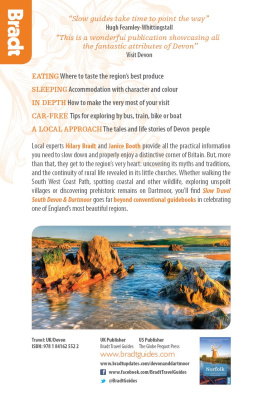
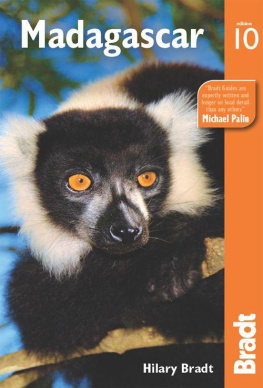
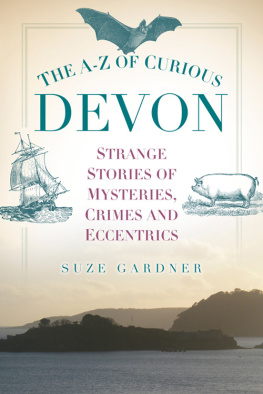


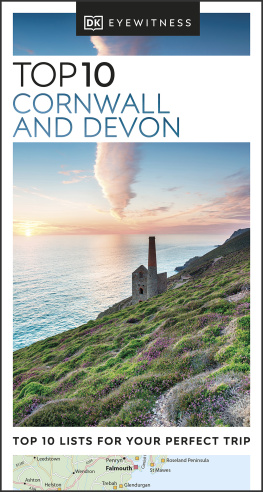

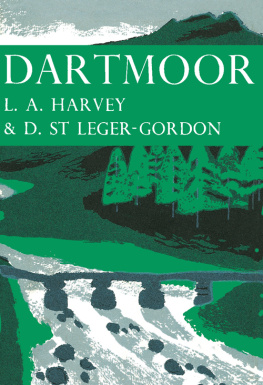

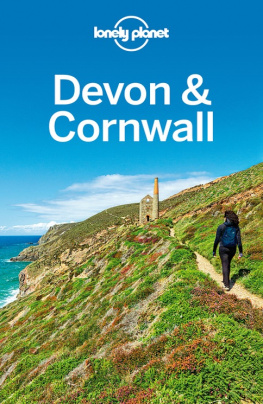
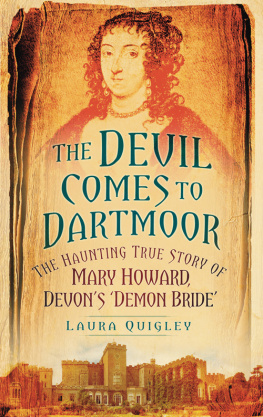

 www.hilarybradt.com ).
www.hilarybradt.com ).
